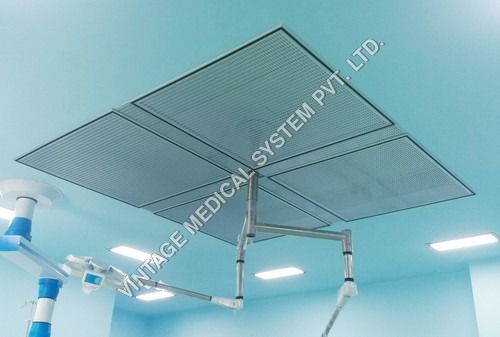OT Laminar Air Flow
Product Details:
X
Product Description
OT Laminar Air Flow, also known as Operation Theater Laminar Air Flow, is a specialized ventilation system designed to create a clean and sterile environment in operating theaters. It provides a controlled and directional flow of filtered air, minimizing the risk of airborne contamination during surgical procedures.
Frequently Asked Questions:
Q: What is OT Laminar Air Flow?
A: OT Laminar Air Flow is a ventilation system specifically designed for operating theaters. It creates a unidirectional and controlled flow of filtered air, which is directed downward over the surgical area. This airflow helps to minimize airborne contamination, maintain sterility, and reduce the risk of surgical site infections.
Q: How does OT Laminar Air Flow work?
A: OT Laminar Air Flow works by drawing in air from the surrounding environment, passing it through high-efficiency particulate air (HEPA) filters to remove contaminants, and delivering the filtered air in a uniform and directed manner over the operating table. This unidirectional airflow creates a "clean zone" around the surgical area, minimizing the presence of airborne particles.
Q: What are the advantages of using OT Laminar Air Flow?
A: OT Laminar Air Flow offers several advantages. It helps to maintain a sterile and contaminant-free environment during surgeries, reducing the risk of surgical site infections. The unidirectional airflow also assists in controlling the dispersion of airborne contaminants generated during procedures, enhancing the safety and well-being of both patients and healthcare professionals.
Q: Does OT Laminar Air Flow remove all types of contaminants?
A: OT Laminar Air Flow is highly effective in removing airborne particles, including dust, microorganisms, and other contaminants of various sizes. The HEPA filters used in the system are designed to capture particles as small as 0.3 micrometers with a high efficiency, ensuring a cleaner and safer surgical environment.
Enter Buying Requirement Details



